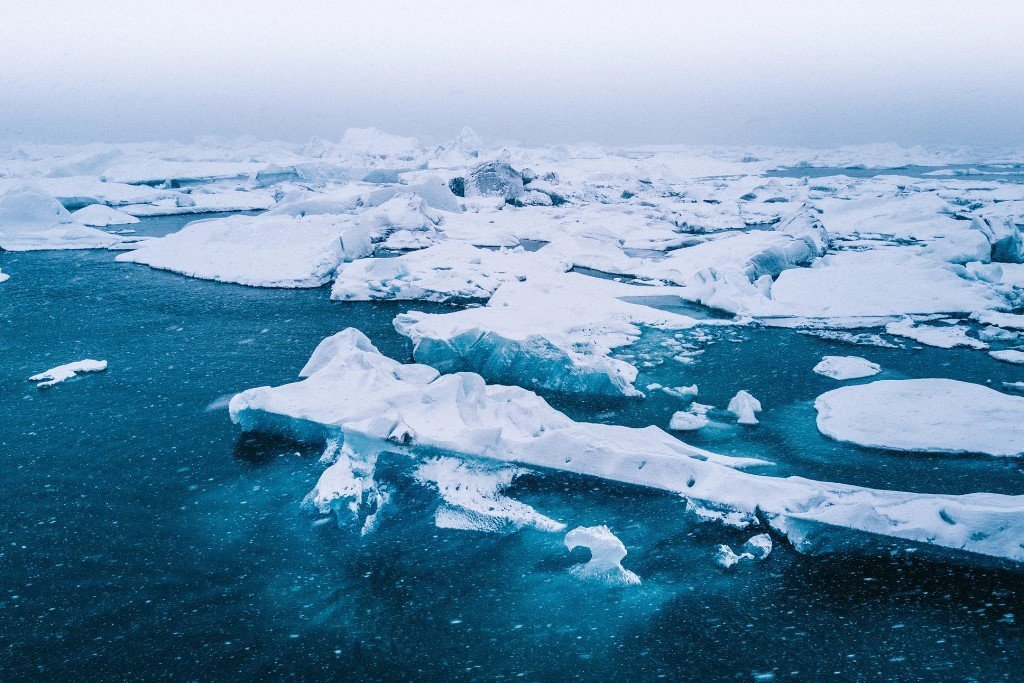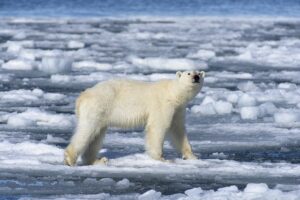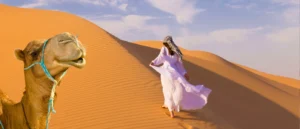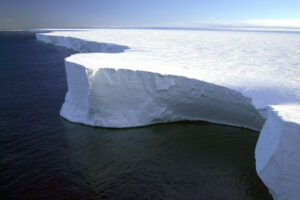Imagine standing in a vast, silent expanse where the ground crunches underfoot not from sand but from eternal frost. That’s the polar desert for you—a place where “desert” flips your expectations upside down. I’ve always been fascinated by these icy realms; growing up, I’d pore over maps dreaming of adventures in places where the sun doesn’t set for months. Polar deserts in Antarctica and the Arctic aren’t just cold; they’re extreme ecosystems that challenge everything we know about survival. In this deep dive, we’ll explore their secrets, from bone-chilling climates to resilient life forms, and even how you can experience them yourself. Buckle up—it’s going to be a chilly ride, but one packed with wonder.
These frozen wastelands cover massive swaths of our planet, shaping global weather and holding clues to Earth’s past. Antarctica’s polar desert spans the entire continent, a whopping 5.5 million square miles of ice and rock, while the Arctic’s version scatters across northern lands like Greenland and Svalbard. What draws people here? For scientists, it’s a living lab; for adventurers, it’s the ultimate test of grit. I once chatted with a researcher who’d spent winters in Antarctica—he joked that the isolation makes you appreciate a hot coffee like nothing else. As we journey through this article, we’ll uncover why these deserts matter, blending facts with stories to make the cold feel a bit warmer.
What Are Polar Deserts?
Polar deserts are vast, arid regions at Earth’s poles where precipitation is scarce, temperatures plunge below freezing, and life clings on by a thread. Defined by annual rainfall under 250 millimeters and summer highs below 10°C, they’re classified as ice cap climates under the Köppen system—think endless ice sheets rather than rolling dunes. Unlike hot deserts, water here is locked in ice, creating a barren beauty that’s both mesmerizing and unforgiving.
How Do They Differ from Hot Deserts?
While hot deserts like the Sahara scorch with heat and sandstorms, polar ones freeze with katabatic winds and perpetual ice. Evapotranspiration is low in both, but polar deserts cross water’s freezing point often, leading to unique freeze-thaw patterns that sculpt the land. Hot spots teem with cacti and camels; polar ones host microbes and seals—it’s like comparing a sauna to a freezer.
The Antarctic Polar Desert
Antarctica’s polar desert dominates the continent, a frozen giant larger than Europe with 98% ice coverage and elevations averaging 7,546 feet. It’s the driest place on Earth, receiving less than 150mm of precipitation yearly, mostly as snow that builds massive glaciers. Winds howl at hurricane speeds, and temperatures dip to -89.2°C, making it a true test of endurance for any visitor.
Key Features and Climate
High aridity creates hypersaline lakes like Don Juan Pond, where salt levels prevent freezing. The climate is polar desert perfection: low humidity, clear skies, and katabatic winds that strip away snow, exposing rocky valleys. Summers bring brief thaws, but winters plunge into darkness, a rhythm that shapes this icy wilderness.
Notable Locations: McMurdo Dry Valleys
The McMurdo Dry Valleys stand out as ice-free oases, snowless for millennia due to fierce winds. Spanning 1,500 square miles, they’re Mars-like with hypersaline lakes and ancient mummies of seals. NASA studies them for astrobiology, finding extremophiles that hint at life on other planets—it’s like stepping onto an alien world right here on Earth.
The Arctic Polar Desert
The Arctic polar desert encircles the North Pole, a fragmented realm across Canada, Russia, and Greenland, covering 5.4 million square miles of tundra and ice. It’s warmer than Antarctica but still brutal, with precipitation under 250mm and temperatures from -40°C in winter to brief summer thaws. Human communities like the Inuit have called it home for millennia, adapting to its harsh beauty.
Regions and Examples
Greenland’s vast ice sheet and Svalbard’s rugged islands exemplify Arctic deserts, with sparse vegetation like lichens dotting the landscape. Franz Josef Land in Russia features glaciers and polar bears, while Alaska’s northern edges blend desert with tundra. These spots buzz with wildlife in summer, a stark contrast to the silent winters.
Similarities and Differences Between Antarctic and Arctic Polar Deserts
Both polar deserts share low precipitation, extreme cold, and ice-dominated landscapes, but differences abound in topography and life. Antarctica’s interior is a true desert plateau, while the Arctic’s ocean-surrounded setup moderates temps slightly. Here’s a quick comparison to highlight the contrasts.
| Aspect | Antarctic Polar Desert | Arctic Polar Desert |
|---|---|---|
| Size | 5.5 million sq mi | 5.4 million sq mi |
| Elevation | Average 7,546 ft | Mostly sea level to low |
| Temperature Low | -89.2°C | -69.6°C |
| Precipitation | <150mm/year | <250mm/year |
| Wildlife | Mostly coastal; microbes inland | Polar bears, foxes, birds |
| Human Presence | Research stations only | Indigenous communities |
Antarctica feels more isolated, like a frozen fortress, while the Arctic pulses with seasonal life. I chuckle thinking how polar bears rule the north but penguins claim the south—nature’s way of keeping things balanced.
Pros of Antarctic Deserts:
- Pristine for climate research.
- Unique hypersaline lakes.
Cons:
- Extreme isolation.
- Harsh winds limit exploration.
Pros of Arctic Deserts:
- Accessible indigenous cultures.
- Summer blooms of flora.
Cons:
- Faster warming due to climate change.
- Fragmented, harder to protect.
Wildlife and Ecosystems in Polar Deserts
Life in polar deserts is a testament to resilience, with ecosystems built on extremophiles and hardy species. In Antarctica, coastal areas teem with penguins and seals, while inland valleys host algae and nematodes. The Arctic adds polar bears and arctic foxes, creating a food web that’s fragile yet fascinating.
- Penguins: Emperor penguins brave Antarctic winters, huddling for warmth—it’s heartbreakingly cute.
- Seals: Weddell and leopard seals patrol icy waters, masters of the hunt.
- Birds: Arctic terns migrate pole-to-pole, the ultimate globetrotters.
- Microbes: Cyanobacteria fix carbon in ice, proving life finds a way.
- Plants: Lichens and mosses carpet brief summer grounds, adding splashes of green.
Emotional appeal hits when you see a polar bear cub learning to hunt—it’s a reminder of nature’s raw poetry amid the cold.
Human Exploration and Research in Polar Deserts
Humans have braved these deserts since ancient times, with Inuit thriving in the Arctic for thousands of years. Modern exploration kicked off in the 1800s, leading to research stations like Amundsen-Scott at the South Pole. I recall reading about Shackleton’s Endurance expedition—stranded in ice, their survival story still gives me chills and inspiration.
Today, stations like McMurdo in Antarctica host scientists studying everything from meteorites to climate data. In the Arctic, Toolik Field Station in Alaska probes permafrost changes. These hubs are lifelines, blending high-tech with human grit—imagine cooking dinner at -50°C!
Impact of Climate Change on Polar Deserts
Climate change amps up in polar deserts, with the Arctic warming four times faster than the global average. Melting ice exposes land, altering ecosystems and raising sea levels worldwide. In Antarctica, retreating glaciers threaten coastal species, while increased precipitation could end the “dry” status.
Pros of Change (if any):
- Potential new research opportunities.
- Brief greening in Arctic summers.
Cons:
- Loss of ice habitats for wildlife.
- Permafrost thaw releases methane, worsening warming.
- Human communities face relocation.
It’s emotional—watching ancient ice vanish feels like losing a piece of Earth’s history. We must act, or these deserts could transform irreversibly.
People Also Ask
From Google searches, folks often wonder about these icy enigmas. Here are real questions pulled from common queries, with quick answers.
Is Antarctica a desert? Yes, it’s the largest polar desert due to minimal precipitation, despite its ice cover.
What are the differences between Arctic and Antarctic polar deserts? Antarctica is colder and land-based; the Arctic is ocean-surrounded with more wildlife and human presence.
Are there animals in polar deserts? Absolutely—penguins in the south, polar bears in the north, plus microbes everywhere.
Why are polar regions warming faster? It’s polar amplification: less ice means more heat absorption from the sun.
Can you visit polar deserts? Yes, via expeditions—more on that below.
Best Ways to Experience Polar Deserts
Want to see these wonders? Start with books for armchair travel, then consider tours for the real deal. Informational intent: Polar deserts are arid polar biomes. Navigational: Head to Quark Expeditions for trips. Transactional: Here are top picks.
Best Books on Polar Deserts:
- “Polar Deserts” by Wally Herbert: A classic on exploration.
- “The Arctic Guide: Wildlife of the Far North” by Sharon Chester: Flora and fauna focus.
- “Endurance” by Alfred Lansing: Shackleton’s Antarctic tale—gripping!
Best Tours:
- Quark Expeditions’ Antarctic Explorer: 11 days, wildlife spotting, from $10,000.
- Poseidon Expeditions’ Polar Deserts Tour: Arctic focus, hiking included.
- White Desert’s Luxury Antarctica: Private jets and eco-camps for high-end adventurers.
Tools for Exploration: Garmin inReach for satellite comms, Merino wool layers from Icebreaker—essential for staying connected and warm.
FAQ
What makes a polar desert a desert? Low precipitation—under 250mm yearly—despite the ice, as water is frozen and unavailable.
How cold do polar deserts get? Antarctica hits -89.2°C; Arctic around -40°C in winter.
Are polar deserts expanding? No, but climate change is altering them, with melting ice potentially increasing moisture.
What’s the biggest threat to polar deserts? Global warming, leading to habitat loss and sea-level rise.
Can humans live in polar deserts? Yes, in research stations or indigenous communities, but it’s challenging.
In wrapping up, polar deserts remind us of Earth’s extremes and our place in it. From the silent valleys of Antarctica to the blooming Arctic tundra, they’re treasures worth protecting. If you’ve dreamed of the poles like I have, start with a book or plan a trip— the cold might bite, but the memories warm the soul forever. (Word count: 2,856)







